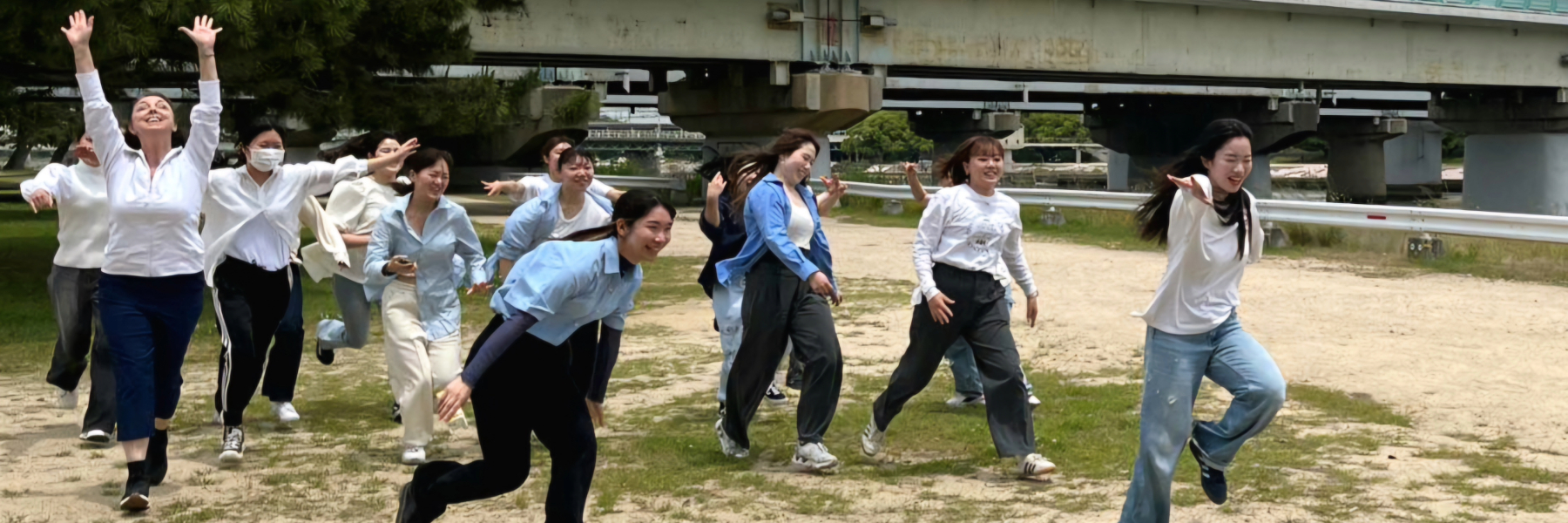
Students from York University have an opportunity to collaborate with students from Japan’s Mukogawa Women’s University this month as the result of a globally networked learning (GNL) award granted to Lisa Sandlos, a contract faculty member in York U’s School of Gender, Sexuality & Women's Studies and the Faculty of Education, by the GNL team at York International.
GNL is an approach to teaching and learning that enables people from different locations worldwide to work together on knowledge-making processes and research projects. It provides cross-cultural opportunities for students who might not have the chance to study abroad – a definite benefit in today’s global economy.
Sandlos will be pairing students in her summer course GSWS/DANC4528 3.0 – Feminism, Dance and The Body: Performance, Movement and Transformation – with students in a course at Mukogawa Women’s University taught by Naoko Murakoshi, who offers a seminar focusing on somatic movement, education and dance. The two women studied together in a professional training program at the School of Toronto Dance Theatre (now called the Dance Arts Institute) and were faculty colleagues at York U for several years before Murakoshi returned to teach in her native Japan.


Thanks to a Hyogo Overseas Research Network fellowship, Sandlos was able to travel to Japan this spring and plan the GNL exercise with Murakoshi in person.
“Because we are considering bodies, movement and dance, it was helpful to be together in a physical space with her students,” Sandlos said. “I was there doing research, but I also taught five classes and gave a lecture on gender, sexuality and sexualization in competitive dance.”
Murakoshi noted, “It was good to have Lisa here so we could create the GNL plans together. The process is very important, and we wanted to share our thoughts.”
The York U course, which began at the end of June, is six weeks long. Sandlos introduced the GNL component during the second class, and provided another assignment option for students who preferred not to participate.
As part of the GNL component, both students in each pair will create a video “about any aspect of their identity that they wish to share,” Sandlos said. “They will then observe their partner’s video and write a reflection on what they observe and what they have experienced. They will also reflect on what the body can tell us, especially through movement and dance.”
Once the students begin the project, they will be able to work either asynchronously or synchronously, but the 13-hour time difference will likely play a part in their decisions.
Through this project, the two professors hope their students will gain an understanding of the cultural and social dimensions of movement.
“Ideas about the body are social and cultural and aren’t fixed,” Sandlos said. “When we communicate cross-culturally, we realize that people collectively create their understanding about the world and the body. Movement is culturally coded and we need to understand the level of diversity that exists in order to communicate effectively.”
Murakoshi noted that bodies are socially conditioned. In Eastern philosophy and Japanese culture, she explained, small gestures can carry great meaning.
“This exchange will help the students start to reveal their own biases and understand that how they perceive things is societal,” said Murakoshi. “This is revealed clearly when they exchange movement, and I want them to experience that with peers.”
Sandlos hopes students will find the GNL project informative, not only as a cross-cultural exchange but as experiential education, which was her impetus for creating it.
